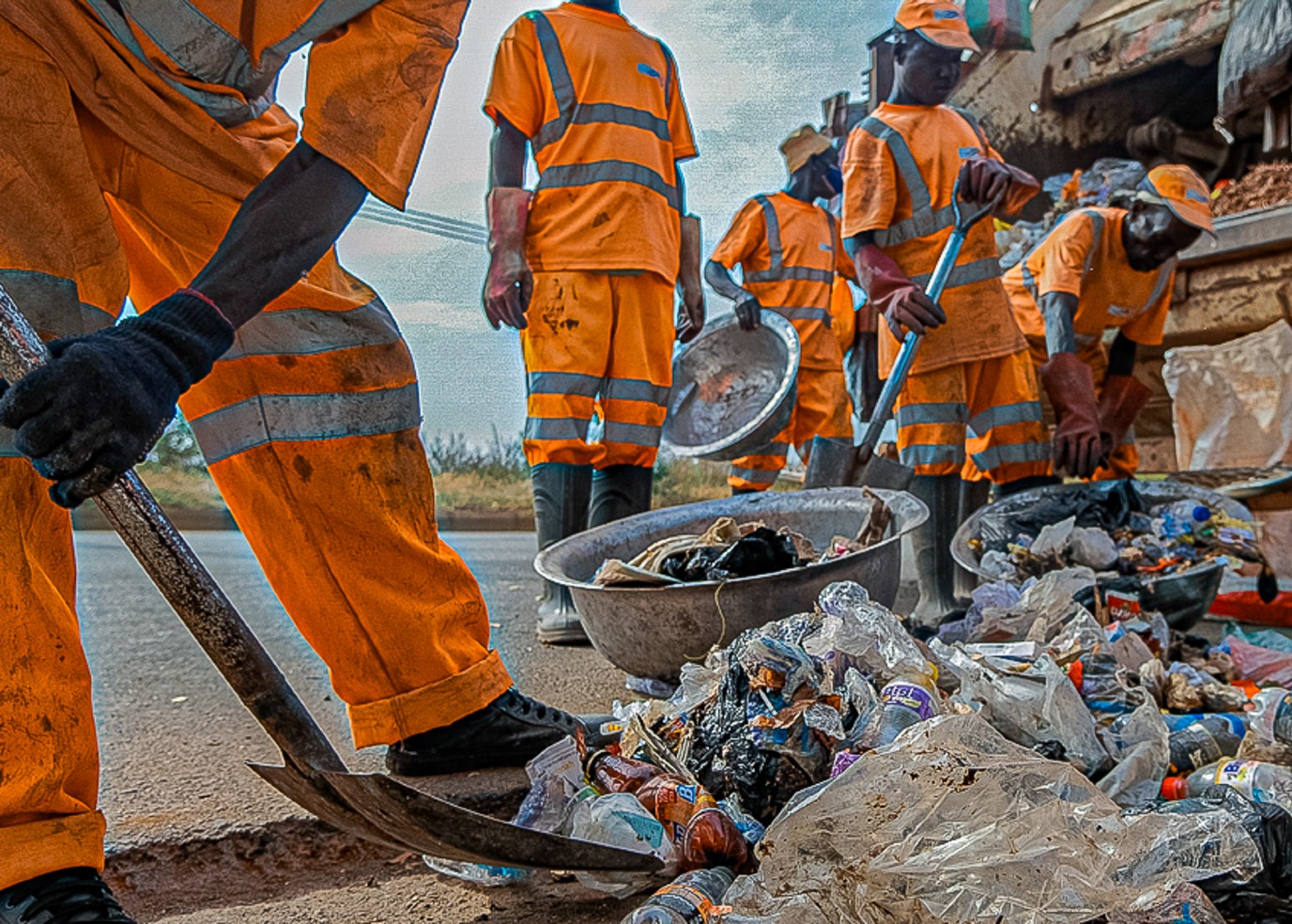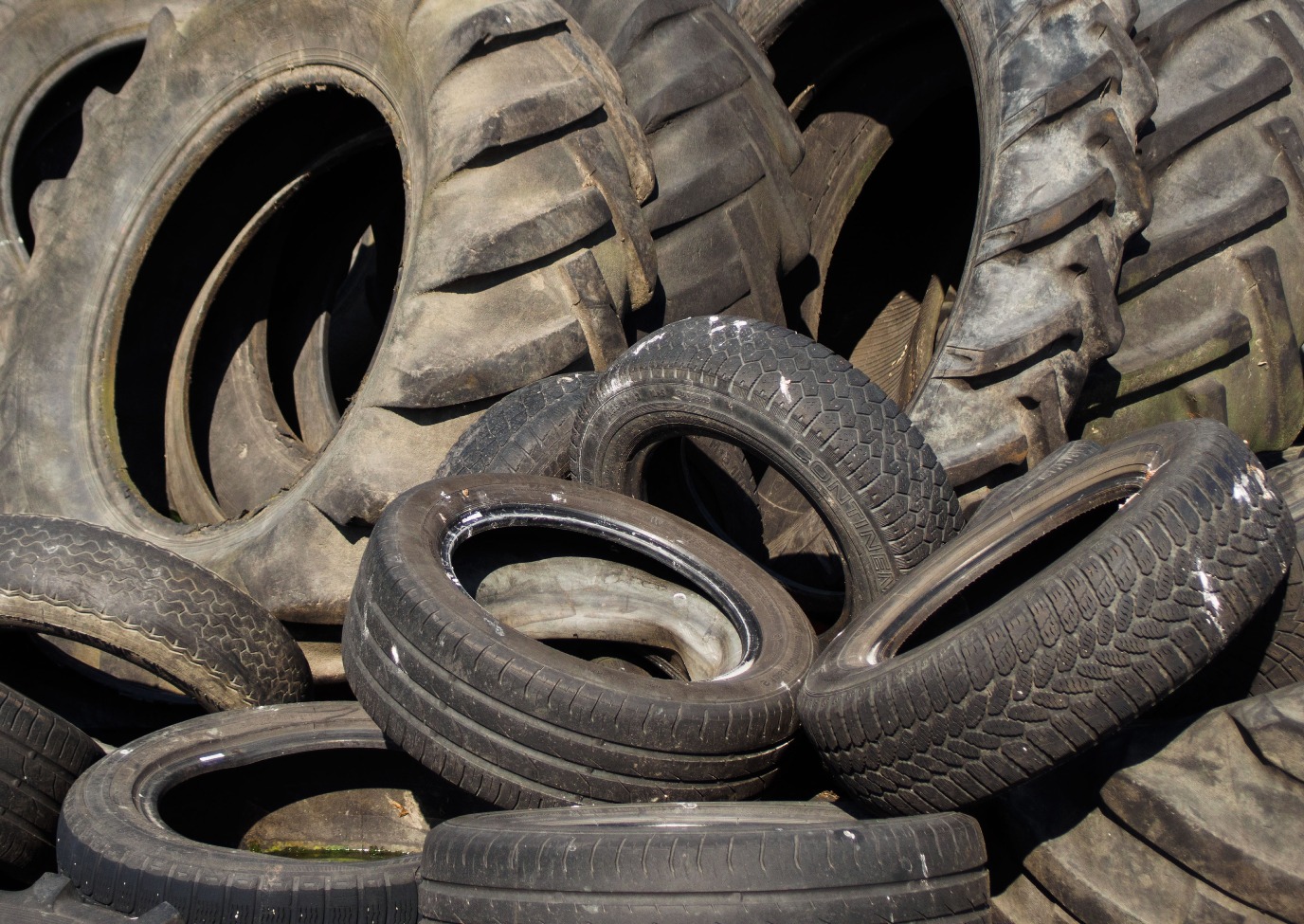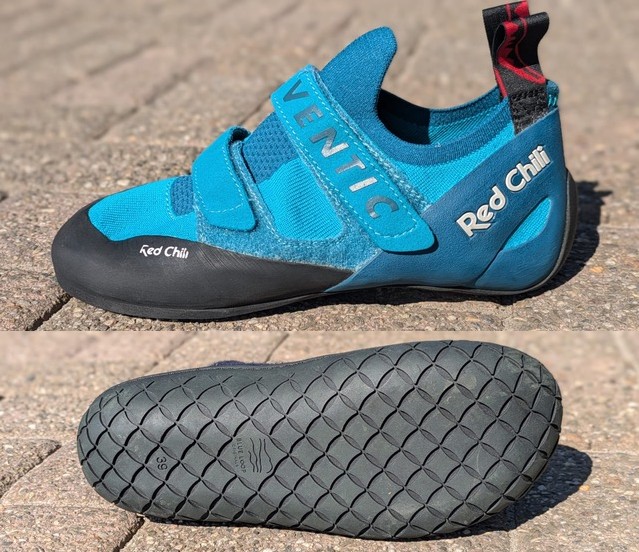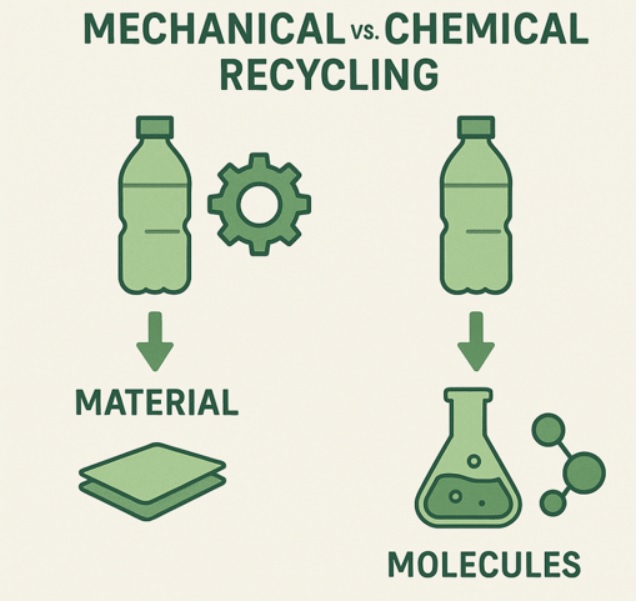Plastic recycling: hoe kun je de koolstofatomen opnieuw gebruiken?

De hoeveelheid plastic afval is enorm: wereldwijd gooien we ieder jaar 350 miljoen ton weg, wat neerkomt op 40 kilo per aardbewoner. Wetenschappers van de Faculty of Science and Engineering (FSE) van de RUG werken aan nieuwe manieren om plastic afval te recyclen en er nieuwe, hoogwaardige producten van te maken. Dit is het tweede deel in een serie van vier artikelen over plastic-onderzoek binnen FSE.
FSE Science Newsroom | Tekst René Fransen
Het recyclen van plastic heeft verschillende voordelen: hergebruik vermindert de hoeveelheid afval, en levert grondstoffen voor nieuw plastic op. Door de koolstofatomen waaruit plastics zijn opgebouwd opnieuw te gebruiken komen ze bovendien niet direct in de vorm van het broeikasgas kooldioxide in de atmosfeer terecht. Maar recyclen is niet eenvoudig: er zijn veel verschillende soorten plastic die allemaal om een andere aanpak vragen, vertelt hoogleraar chemische technologie Francesco Picchioni.
Een unieke positie in recycling-onderzoek
'We werken aan de recycling van een groot aantal verschillende plastics, samen goed voor zo’n 80 procent van al het plastic dat wordt geproduceerd.
‘De Rijksuniversiteit Groningen heeft een unieke positie in onderzoek naar recycling: we werken aan de recycling van een groot aantal verschillende plastics, samen goed voor zo’n 80 procent van al het plastic dat wordt geproduceerd. Ik ken geen ander instituut waar het onderzoek zo breed is.’ Slechts drie soorten plastic, polyethyleen (PE), polypropyleen (PP) en polivinyl chloride (PVC) zijn samen al goed voor 75 procent van alle plasticproductie wereldwijd. ‘En als je daar het PET van de plastic flessen en polyurethaan dat gebruikt wordt in schuim bij optelt kom je al boven de 80 procent uit.’

Picchioni werkt zelf aan verschillende polymeren, de lange moleculen waaruit plastics zijn opgebouwd. Hij zorgde recent voor een doorbraak in de recycling van rubber. De polymeren in rubber zijn met elkaar verbonden zodat ze een soort moleculair netwerk vormen. Het leek onmogelijk dit netwerk uit elkaar te halen zonder de polymeren te beschadigen. Dat leidt tot kortere polymeren, waarmee alleen nog een lagere kwaliteit rubber is te maken. Picchioni vond een manier om de kortere polymeren zo aan elkaar te verbinden dat er nieuw rubber ontstond van gewone kwaliteit. Het bedrijf New Born Rubber gebruikt deze gepatenteerde methode om nieuw rubber te maken voor producten zoals rijplaten.
De invloed van patenten op je carrière
Francesco Picchioni heeft een aantal patenten op zijn naam staan. Dat klinkt mooi, maar het is niet altijd goed voor een wetenschappelijke carrière. Hij vertelt dat hij gemakkelijk tien artikelen zou kunnen schrijven over de methode om rubber te recyclen, maar dat niet doet. ‘Het patent is acht jaar geleden toegekend. Als ik publiceer over de methode zou dat de positie schaden van het bedrijf dat met behulp van de gepatenteerde technologie producten wil maken. Voor mij maakt dat niet uit, ik ben een gevestigde wetenschapper en heb niet zoveel publicaties meer nodig. Maar het zou heel slecht zijn voor de carrière van een junior onderzoeker.

Upcycling en downcycling
‘Onze universiteit is ook uniek omdat we hier werken aan allebei de manieren om plastic te recycling: materiaal recycling en chemische recycling’, vertelt Picchioni. Materiaal recyclen is een proces waarbij het plastic direct wordt hergebruikt. Maar dit betekent meestal dat de kwaliteit van het gerecyclede product minder wordt. Bij chemische recycling worden de polymeren afgebroken in hun bouwstenen, de monomeren, of zelfs tot kooldioxide en water. Die afbraakproducten zijn dan te gebruiken als bouwstenen voor nieuwe plastics. Wanneer je afval omzet in nieuw plastic heet dat ‘upcycling’. Maar het is doorgaans eenvoudiger om plastic af te breken in simpele koolwaterstoffen die zijn te gebruiken als een lage kwaliteit brandstof, voor bijvoorbeeld schepen. Deze route heet ‘downcycling’.

PVC recyclen met superkritisch kooldioxide
Superkritische vloeistoffen ontstaan wanneer gassen onder hoge druk worden gebracht. Ze combineren de eigenschappen van een gas en een vloeistof, wat betekent dat ze gemakkelijk doordringen in materialen. Superkritisch kooldioxide is bovendien een zeer efficiënt oplosmiddel, dat ook nog eens gemakkelijk verdampt na gebruik. Door plastic met dit oplosmiddel te behandelen is het mogelijk om de hulpstoffen eruit te halen. Wanneer je dit doet in een gesloten reactor is de kooldioxide op te vangen en weer opnieuw te gebruiken. In 2020 ontvingen Picchioni en enkele RUG-collega’s een onderzoeksubsidie van 2,5 miljoen euro om zo’n systeem te ontwikkelen.
Picchioni probeert als het maar enigszins mogelijk is ‘downcycling’, waarbij het gerecyclede product minder waard is dan het origineel, te vermijden. Hij werkt onder meer aan een project om PVC te recyclen met behulp van superkritisch kooldioxide. ‘Dit type plastic bevat heel veel hulpstoffen. Zacht PVC bestaat voor ongeveer dertig procent uit weekmakers, en die maken het ongeschikt voor recycling’, legt hij uit. Bovendien bevat PVC chloride, die tijdens het recyclen wordt omgezet in de bijtende stof zoutzuur.
Met superkritisch kooldioxide zijn de hulpstoffen te verwijderen en voorkom je de vorming van zoutzuur. Picchioni: ‘We verwachten later dit jaar een proefinstallatie te hebben waarin we vijf kilo PVC per uur kunnen schoonmaken. En we zijn bezig met een patent op een techniek waarmee we het zoutzuur op een gecontroleerde manier kunnen verwijderen zodat PVC indien nodig geschikt is te maken voor chemische recycling.’
Dit is het tweede deel in een serie van vier artikelen over plastic. Volgende week kun je lezen over het gebruik van enzymen bij plastic recycling. Lees de andere artikelen van deze reeks hier:
Prof. Barbro Melgert heeft ontdekt hoe microplastics de longen aantasten en kan uitleggen hoe we onze blootstelling kunnen verkleinen.
Edita Jurak zoekt bacteriën waarvan de enzymen nuttig zijn bij het recyclen, maar ook bij het opruimen van plastics in de natuur.
RUG-wetenschappers werken aan nieuwe manieren om groene plastics te maken. Het is lastig om die tegen concurrerende prijzen te produceren.
Meer nieuws
-
19 december 2025
Mariano Méndez ontvangt Argentijnse RAÍCES-prijs
-
18 december 2025
Waarom innoveren, en voor wie?
-
17 december 2025
Ben Feringa wint Feynmanprijs
